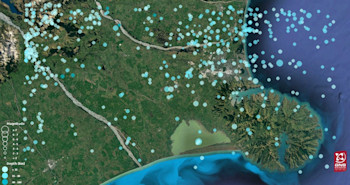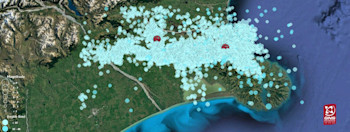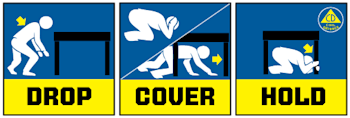
A Decade on: Canterbury Aftershocks
Prior to the 2010 Darfield earthquake Canterbury was a moderately quiet seismic region of New Zealand. Since then, it has been lit up by earthquakes. So why are earthquakes in Canterbury still happening?
Aftershock sequences typically quieten down over time – but it can take years, decades or even centuries for seismicity in a region to return to a pre-influenced (before the mainshock) state. So, with Canterbury it comes down to how seismically quiet the region was before the Darfield earthquake.
There were around 350 earthquakes in the decade before the Darfield earthquake in the Canterbury region. In the decade since, there have been over 15,000 earthquakes in the same region. That’s a 5000% increase. And while the rate of aftershock occurrence has certainly dropped off since 2010, the seismicity remains above what it used to be, as many people in the area can surely attest to.
It’s in hindsight that we can say that the Darfield earthquake has influenced the seismicity (earthquakes) across the region. We now know that earthquake was the mainshock. This makes all the other earthquakes that have occurred in the region since aftershocks.
When viewed in isolation, an earthquake is a rupture of the ground, small or large, and we know about them because of the ground deformation and seismic waves they produce.
With a record or series of earthquakes, however, we can view them collectively and see an earthquake in the context of all other earthquakes. This allows us to draw relationships between earthquakes.
So, if we see that earthquake behaviour in a region has changed after an earthquake and that those changes can be related to the earthquake, then we call that earthquake a mainshock and the other earthquakes aftershocks. When an earthquake occurs, it causes many changes to the stress in the Earth's crust, and the bigger the earthquake the bigger the changes are. These stress changes are a big part of what cause aftershocks to occur when they do.
“The Darfield earthquake has showed that rare events – once every 20,000 or 30,000 years – have to happen sometime. Low Hazard does not mean no hazard.” ~ Dr Kelvin Berryman (Former leader of the Natural Hazards and Risks Theme at GNS Science)
What will happen in the future is unknown. We know the earth is still recovering as aftershocks are the earth’s way of settling down after a big shock. We can’t say if Canterbury will ever return to how it was before the Darfield earthquake, as seismicity always changes, and we only have an insignificant snippet of what has happened in the past.
Why do we still call them aftershocks?
Aftershocks are themselves earthquakes, we give them this label as they are occurring earlier in time because they were influenced by the initial main shock. Because this definition can be a bit unclear, instead of talking about aftershocks, these days we often talk about clusters of earthquakes and triggered earthquakes. Clusters refer to earthquakes that are grouped together in space and time and a triggered earthquake refers to those that occurred because of another earthquake, i.e., when a second earthquake is triggered by the first. Using these words can help clear up some of the confusion that the term aftershock introduces.
Dr Matt Gerstenberger describes this influence in one of our recent Ask an Expert videos:
Remember in an earthquake to Drop, Cover and Hold
If you feel a long or strong earthquake, or receive a tsunami warning alert, get to higher ground immediately.
NEMA (National Emergency Management Agency) have a great website with information on what to do before, during and after an earthquake. And the Earthquake Commission (EQC) have a helpful website with information on how to get your home, apartment, or rental prepared for a natural disaster.
This is the second in a series of stories we will post, over the next few months, marking the ten-year anniversary of the Canterbury earthquakes.
Attributable to Dr Matt Gerstenberger, Seismologist. Sam Taylor-Offord, Geonet Duty Seismologist
Media contact: 021 574 541 or media@gns.cri.nz





